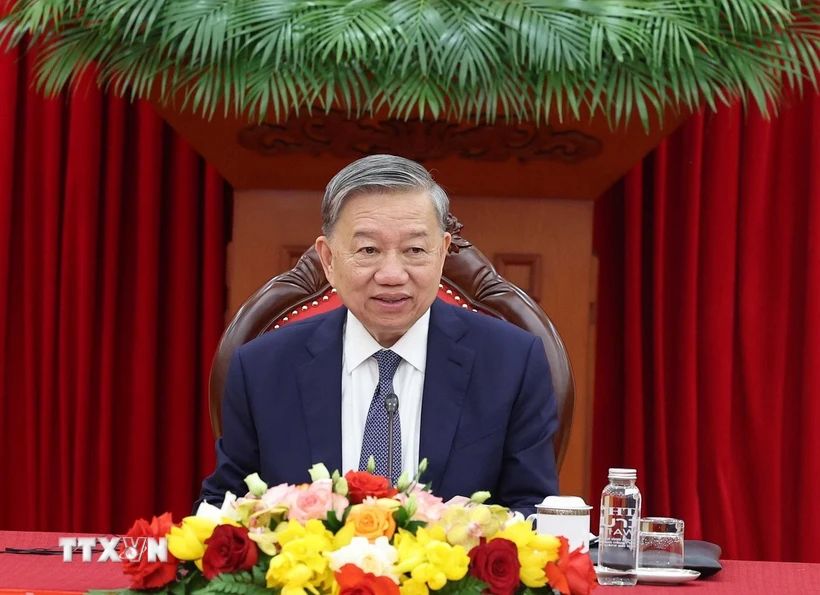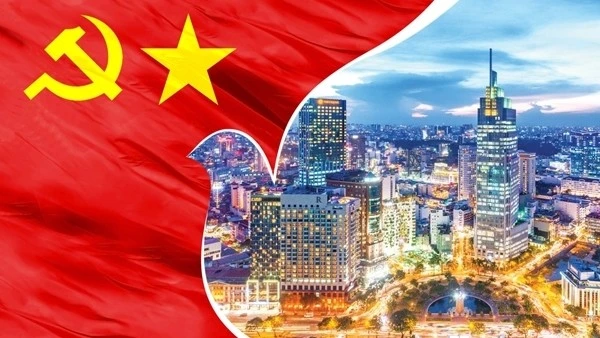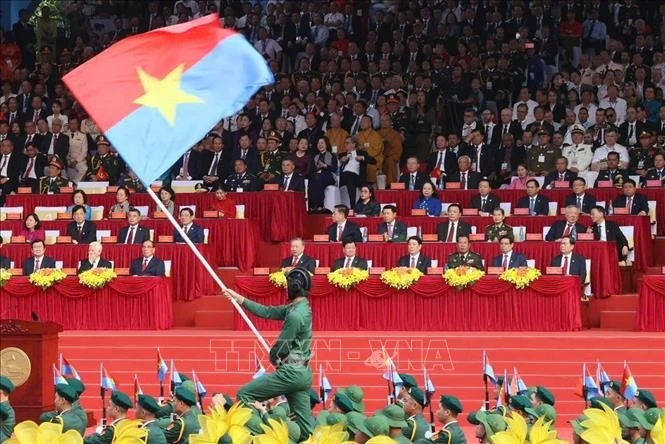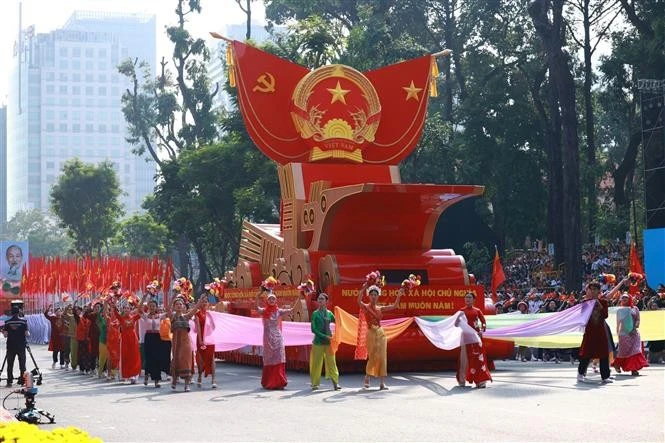The April 30, 1975 Victory represents the embodiment of the ideals of independence, unification, and self-determination, and remains a crucial reference point in contemporary discussions surrounding sovereignty and justice, a Japanese scholar has affirmed.
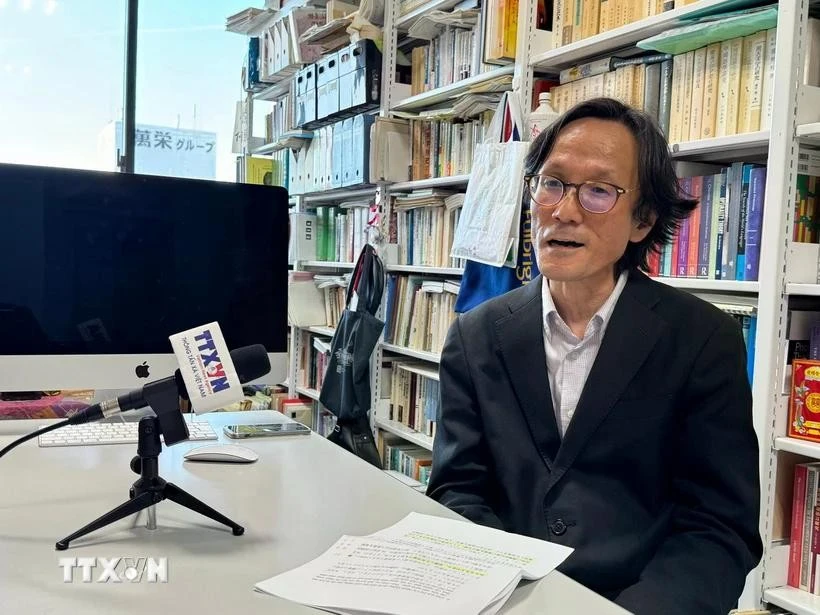 |
| Professor Shimizu Masaaki at Osaka University. Photo: VNA |
Speaking to the Vietnam News Agency (VNA) correspondent in Japan on the occasion of the 50th anniversary of the Liberation of the South and National Reunification (April 30, 1975-2025), Professor Shimizu Masaaki at Osaka University emphasised that the 1975 victory transcended the mere conclusion of a war in one nation, carrying profound international significance.
Historically, it marked a milestone in the global movement for national liberation and the decolonisation process during the latter half of the 20th century. It sent a powerful message to the world: even a "weaker nation" could stand firm against a superpower when backed by national independence and unity. The victory served as a source of immense spiritual support to many Asian and African nations during that era.
In terms of its impact on the global revolutionary movement, the 1975 victory became a catalyst for socialist and anti-imperialist movements across the Global South. Vietnam was hailed as a "model of triumph" for leftist forces in Latin America and Africa, providing both theoretical legitimacy and renewed hope for struggles in those regions.
Professor Masaaki further underlined the significance of national unity, a spirit that not only secured Vietnam’s historic victory but also laid the foundation for post-war reconstruction and development. First and foremost, this unity reinforced the legitimacy and stability of national reunification. The end of the war created a historic opportunity for the Vietnamese people to advance as one nation, overcoming ideological and regional divides. At the time, the collective aspiration for “independence, freedom, and unity” was widely shared among the population. This spirit of solidarity not only justified national reunification domestically and internationally but also helped ensure a stable beginning for the newly unified country.
Second, the unity served as a collective force in post-war rebuilding and the pursuit of socialism. Vietnam faced enormous challenges following the war, including devastated infrastructure, economic crisis, and strained diplomatic relations. Overcoming these difficulties requires not just individual effort, but the collective will and cooperation of the entire nation. The spirit of unity forged during wartime became a driving force in confronting these national trials.
Third, this unity evolved into a cultural value, helping to shape the Vietnamese national identity. The war was not only a political conflict but also a national resistance against foreign intervention. The solidarity born from the April 30 victory remains a source of pride and confidence, reinforcing the belief that “we are a nation capable of overcoming adversity together”, a defining aspect of the Vietnamese identity.
In this context, the “spirit of national solidarity” symbolised by the historic victory of April 30, 1975, is not merely a force that helped overcome past wars but also a foundation upon which the nation has been built in peace and continues to move forward. In today’s era, this spirit remains deeply significant as Vietnam experiences strong economic growth and steadily elevates its position on the global stage.
Reflecting on Vietnam’s transformation over the past 50 years since reunification, the professor noted that the country has drawn international attention as a nation that rose from the ruins of war to achieve remarkable economic growth and enhance its global standing. This transformation has been far from easy. Vietnam has had to overcome numerous challenges and has done so with noteworthy progress, driven by several key factors. Chief among them is institutional reform and the transition to a market economy under the Doi moi (Renewal) policy. This gradual and flexible reform process has become a notable success story, enabling economic growth while maintaining social stability.
The second factor is the improvement in educational standards and the vitality of Vietnam’s young population. With a high literacy rate and one of the leading positions in Asia for basic education coverage, Vietnam’s demographic advantage, marked by a large, youthful workforce, has fueled the growth of emerging sectors such as information technology and manufacturing.
Third, the skillful management of international relations, capitalising on Vietnam’s geopolitical position, has played a crucial role in shaping the country’s current status. Maintaining a balanced diplomatic posture with China, ASEAN, Japan, and Western countries, Vietnam has proactively signed multiple free trade agreements, including the Comprehensive and Progressive Agreement for Trans-Pacific Partnership (CPTPP) and the EU-Vietnam Free Trade Agreement (EVFTA), asserting itself as a central node in global supply chains.
It is also noteworthy that Vietnam’s historical journey, from war to peace, from division to integration, has forged a national character marked by resilience and adaptability. As a country that has overcome immense historical hardships, Vietnam has demonstrated a calm and strategic approach to navigating both domestic and global uncertainties.
Half a century after reunification, Vietnam stands not only as a developing economy but also as a nation with the potential to be recognised as a model of sustainable development, one that blends historical lessons, cultural foundations, and institutional adaptability. In this sense, Vietnam’s future trajectory will be a crucial test for the region’s broader stability and development.


